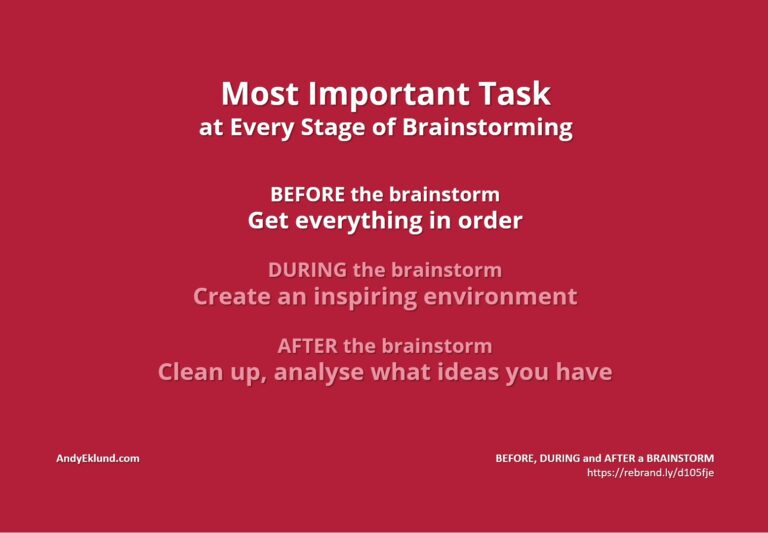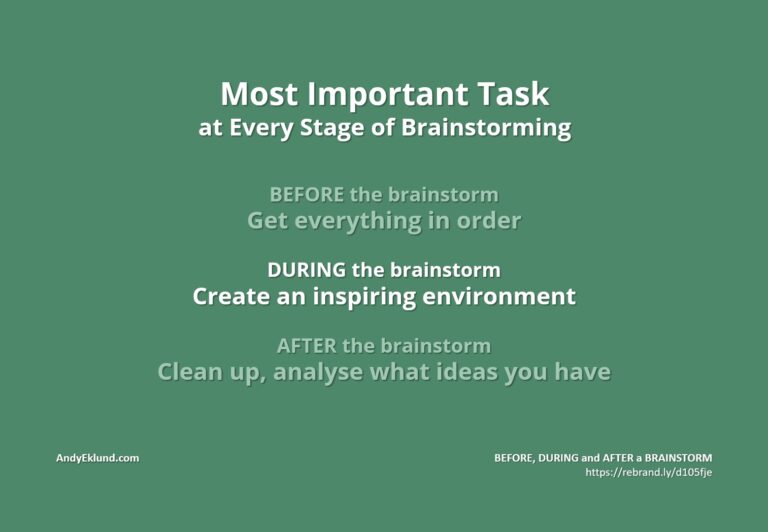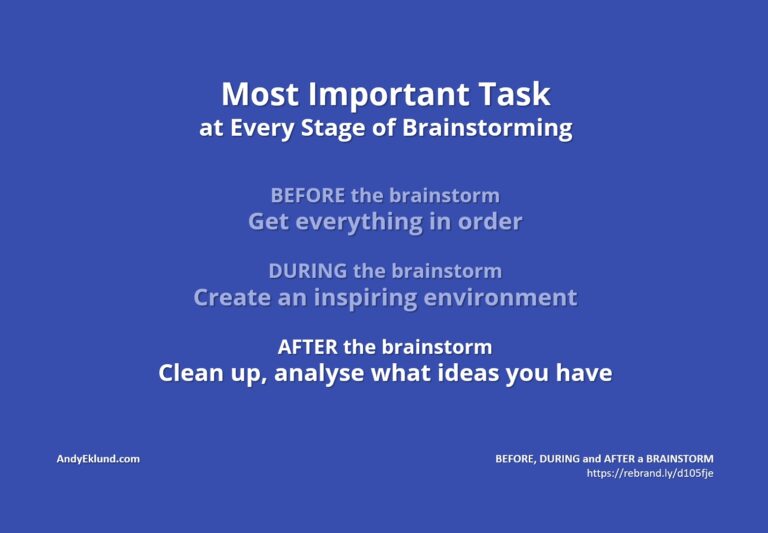This post is the third and final in a series on Finishing a Brainstorm, focusing on Verifying. The two other posts are Clarify (#1) and Amplify (#2).
Also, this topic is parallel to a dreaded brainstorm affliction called Creative Churn.
The final phase in finishing a brainstorm is Verify – meaning, ensure your ideas do what you need them to do, such as asking the basic question: does the idea eliminate the problem?
Here’s the three steps.
Re-review the central problem or critical issues.
- Do your best ideas help address, eliminate, minimise or neutralize the problem or issue?
- Can you cluster similar ideas together around the central problem? Can you merge smaller ideas together to create a bigger, better idea?
- Do you see cohesiveness among those ideas which might solve or address a problem?
If your best ideas don’t address the issues, continue brainstorming – either now or soon. Don’t lose momentum. Also, remember it’s not a ‘good idea’ unless it strongly compels the audience to act or change their attitude/behaviour.
Engage objective people – either the decision-maker or key influentials – to test the best ideas.
- Do you best ideas match or align with your creative criteria? (Note: the criteria should have been agreed-to in advance with your decision-maker, either a client or your brainstorm host.)
- Review the ideas which address as many criteria as possible?
- What do your experts like – and what don’t they like? Ask them to be as specific as possible.
Do not continue brainstorming unless you get their constructive feedback or buy-in from the client or decision maker. You may need to spend extra time to help them articulate what they do or do not like. If you don’t, you’re wasting both their and your time. (It’s called Creative Churn, and it’s never a good thing.)
Research what’s appropriate, available, already happening, and do-able.
Experts can provide helpful counsel to determine whether the ideas are any of these four qualities:
- Appropriate? What does the target audience think of your ideas? How can they be refined and improved further?
- Available? Who hasn’t brainstormed a brilliant idea, only to find out that it’s already been ‘invented’? Look in appropriate databases to check copyright and other legal issues.
- Already ‘in the works’? This is when your professional and personal networks become vital. Often in the process of transitioning an idea from the creative stage to the innovation stage, other people are working on similar goals, issues, elements, or parallel ideas. Within the bounds of intellectual property, now is a good time to share your ideas with others to see how ‘two minds’ can turn two good ideas into one terrific idea.
- Do-able? In short, can the idea be implemented in a way which is efficient, effective, and reasonable given the resources available?
What other tasks have you done in wrapping up a brainstorm? Please add your thoughts and comments below.
This initial series of posts kept growing in popularity. Reader comments and suggestions led to three additional posts: What to do Before, During and After the Brainstorm. Click the image to see the differences, or click the button below to jump to the article itself.





No comment yet, add your voice below!